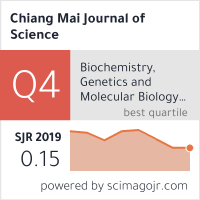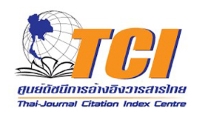JOURNAL DETAIL
Faecal Composition: An Observation of Food Habits of Chinese Pangolin (Manis Pentadactyla) in a Subtropical Forest Associated Countryside in South China
Paper Type |
Contributed Paper |
Title |
Faecal Composition: An Observation of Food Habits of Chinese Pangolin (Manis Pentadactyla) in a Subtropical Forest Associated Countryside in South China |
Author |
Amna Mahmood, Jiaqi LI, Shibao Wu*, Fuhua Zhang*, Na Xu and Wenhua Wang |
Email |
wushibao@163.com, zhangfuhuahbu@163.com |
|
Abstract: Chinese pangolin (Manis pentadactyla) is a critically endangered species throughout its range
due to illegal hunting, poaching, trafficking for its scales and meat, and fragmentation of natural
habitats. Mostly rescue programs for the Chinese pangolin have had limited triumph due to the rarity
of literature on the behavior, ecology, and diet. This study investigated the faecal composition of the
Chinese pangolin in a subtropical forest associated countryside in South China. Chinese pangolin mainly
predates on ants and termites but prefers to eat their eggs and larvae. Other than ants and termites, a
variation was recorded that is the presence of undigested beetle body parts (heads, mouthparts, thorax,
abdomen, elytra, and legs). Analysis of faecal content further revealed that the undigested matter
(by weight) was largely composed of grit (55.85%), insect matter (32.44%), plant matter (7.21%),
and hair (4.50%). As compared to ants and beetles, the digestibility of termites (heads, mouthparts,
abdomens, and legs) was observed high. This digestibility difference was observed from the presence
of considerably more body parts of ant and beetle in faecal matter, compared to that of termites.
However undigested termite wings were observed. The main prey species of the Chinese pangolin
were termites of the genus Odontotermes, ants of the genus Carebara, Pheidole and Anoplolepis, and beetles
of the genus Harpalus. The findings of this study on the Chinese pangolin faecal composition have
suggestions in husbandry, captive rearing, and conservation in wild. |
|
Start & End Page |
373 - 381 |
Received Date |
2020-08-07 |
Revised Date |
|
Accepted Date |
2020-12-07 |
Full Text |
Download |
Keyword |
faecal analysis, critically endangered species, animal conservation |
Volume |
Vol.48 No.2 (March 2021) |
DOI |
|
Citation |
Mahmood A., LI J., Wu* S., Zhang* F., Xu N. and Wang W., Faecal Composition: An Observation of Food Habits of Chinese Pangolin (Manis Pentadactyla) in a Subtropical Forest Associated Countryside in South China, Chiang Mai Journal of Science, 2021; 48(2): 373-381. |
| View:1,039 Download:478 | |
Copyrights © Since 2021 All Rights Reserved by Chiang Mai Journal of Science










